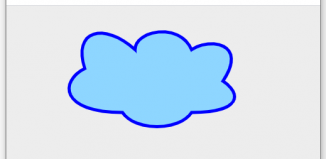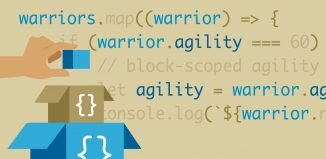
HTML5 Image Effects – Sepia
Today we continue our HTML5 canvas examples, today I want to share with you a method of applying a sepia effect to images. This is not a very difficult method, anyone can repeat it. In our demo we can play with different images by adding a sepia effect to them, as well as we can ‘export’ our result on the image element (<img>).
Here are our demo and downloadable package:
Live Demo
download in package
Ok, download the example files and lets start coding !
Step 1. HTML Markup
This is markup of our demo page. Here it is:
index.html
<!DOCTYPE html>
<html lang="en" >
<head>
<meta charset="utf-8" />
<title>HTML5 Image Effects - Sepia | Script Tutorials</title>
<link href="css/main.css" rel="stylesheet" type="text/css" />
<script type="text/javascript" src="https://www.google.com/jsapi"></script>
<script>
google.load("jquery", "1.7.1");
</script>
<script src="js/script.js"></script>
</head>
<body>
<header>
<h2>HTML5 Image Effects - Sepia</h2>
<a href="https://www.script-tutorials.com/html5-image-effects-sepia/" class="stuts">Back to original tutorial on <span>Script Tutorials</span></a>
</header>
<div id="container" class="container">
<table cellspacing=0>
<tr>
<td><p>Canvas Object <CANVAS></p></td>
<td><p>Image Object <IMG></p></td>
</tr>
<tr>
<td><canvas id="source" width="500" height="500"></canvas><div id="next" class="button">Next image</div></td>
<td><img id="img" src="images/button.png" /></td>
</tr>
<tr>
<td><div id="sepia" class="button">Apply Sepia Effect</div></td>
<td><div id="toImage" class="button">To Image</div></td>
</tr>
</table>
</div>
</body>
</html>
Basically – it contain just one canvas object, one image, and three ‘buttons’ (div elements).
Step 2. CSS
Here are our stylesheets:
css/main.css
*{
margin:0;
padding:0;
}
body {
background-image:url(../images/bg.png);
color:#fff;
font:14px/1.3 Arial,sans-serif;
}
header {
background-color:#212121;
box-shadow: 0 -1px 2px #111111;
display:block;
height:70px;
position:relative;
width:100%;
z-index:100;
}
header h2{
font-size:22px;
font-weight:normal;
left:50%;
margin-left:-400px;
padding:22px 0;
position:absolute;
width:540px;
}
header a.stuts,a.stuts:visited {
border:none;
text-decoration:none;
color:#fcfcfc;
font-size:14px;
left:50%;
line-height:31px;
margin:23px 0 0 110px;
position:absolute;
top:0;
}
header .stuts span {
font-size:22px;
font-weight:bold;
margin-left:5px;
}
.container {
color: #000000;
margin: 20px auto;
overflow: hidden;
position: relative;
width: 1005px;
}
table {
background-color: rgba(255, 255, 255, 0.7);
}
table td {
border: 1px inset #888888;
position: relative;
text-align: center;
}
table td p {
display: block;
padding: 10px 0;
}
.button {
cursor: pointer;
height: 20px;
padding: 15px 0;
position: relative;
text-align: center;
width: 500px;
-moz-user-select: none;
-khtml-user-select: none;
user-select: none;
}
Step 3. JS
Finally – our javascript code of Sepia effect:
js/script.js
// variables
var canvas, ctx;
var imgObj;
// set of sepia colors
var r = [0, 0, 0, 1, 1, 2, 3, 3, 3, 4, 4, 4, 5, 5, 5, 6, 6, 7, 7, 7, 7, 8, 8, 8, 9, 9, 9, 9, 10, 10, 10, 10, 11, 11, 12, 12, 12, 12, 13, 13, 13, 14, 14, 15, 15, 16, 16, 17, 17, 17, 18, 19, 19, 20, 21, 22, 22, 23, 24, 25, 26, 27, 28, 29, 30, 31, 32, 33, 34, 35, 36, 37, 39, 40, 41, 42, 44, 45, 47, 48, 49, 52, 54, 55, 57, 59, 60, 62, 65, 67, 69, 70, 72, 74, 77, 79, 81, 83, 86, 88, 90, 92, 94, 97, 99, 101, 103, 107, 109, 111, 112, 116, 118, 120, 124, 126, 127, 129, 133, 135, 136, 140, 142, 143, 145, 149, 150, 152, 155, 157, 159, 162, 163, 165, 167, 170, 171, 173, 176, 177, 178, 180, 183, 184, 185, 188, 189, 190, 192, 194, 195, 196, 198, 200, 201, 202, 203, 204, 206, 207, 208, 209, 211, 212, 213, 214, 215, 216, 218, 219, 219, 220, 221, 222, 223, 224, 225, 226, 227, 227, 228, 229, 229, 230, 231, 232, 232, 233, 234, 234, 235, 236, 236, 237, 238, 238, 239, 239, 240, 241, 241, 242, 242, 243, 244, 244, 245, 245, 245, 246, 247, 247, 248, 248, 249, 249, 249, 250, 251, 251, 252, 252, 252, 253, 254, 254, 254, 255, 255, 255, 255, 255, 255, 255, 255, 255, 255, 255, 255, 255, 255, 255, 255, 255, 255, 255, 255, 255, 255, 255, 255, 255, 255, 255, 255, 255],
g = [0, 0, 1, 2, 2, 3, 5, 5, 6, 7, 8, 8, 10, 11, 11, 12, 13, 15, 15, 16, 17, 18, 18, 19, 21, 22, 22, 23, 24, 26, 26, 27, 28, 29, 31, 31, 32, 33, 34, 35, 35, 37, 38, 39, 40, 41, 43, 44, 44, 45, 46, 47, 48, 50, 51, 52, 53, 54, 56, 57, 58, 59, 60, 61, 63, 64, 65, 66, 67, 68, 69, 71, 72, 73, 74, 75, 76, 77, 79, 80, 81, 83, 84, 85, 86, 88, 89, 90, 92, 93, 94, 95, 96, 97, 100, 101, 102, 103, 105, 106, 107, 108, 109, 111, 113, 114, 115, 117, 118, 119, 120, 122, 123, 124, 126, 127, 128, 129, 131, 132, 133, 135, 136, 137, 138, 140, 141, 142, 144, 145, 146, 148, 149, 150, 151, 153, 154, 155, 157, 158, 159, 160, 162, 163, 164, 166, 167, 168, 169, 171, 172, 173, 174, 175, 176, 177, 178, 179, 181, 182, 183, 184, 186, 186, 187, 188, 189, 190, 192, 193, 194, 195, 195, 196, 197, 199, 200, 201, 202, 202, 203, 204, 205, 206, 207, 208, 208, 209, 210, 211, 212, 213, 214, 214, 215, 216, 217, 218, 219, 219, 220, 221, 222, 223, 223, 224, 225, 226, 226, 227, 228, 228, 229, 230, 231, 232, 232, 232, 233, 234, 235, 235, 236, 236, 237, 238, 238, 239, 239, 240, 240, 241, 242, 242, 242, 243, 244, 245, 245, 246, 246, 247, 247, 248, 249, 249, 249, 250, 251, 251, 252, 252, 252, 253, 254, 255],
b = [53, 53, 53, 54, 54, 54, 55, 55, 55, 56, 57, 57, 57, 58, 58, 58, 59, 59, 59, 60, 61, 61, 61, 62, 62, 63, 63, 63, 64, 65, 65, 65, 66, 66, 67, 67, 67, 68, 69, 69, 69, 70, 70, 71, 71, 72, 73, 73, 73, 74, 74, 75, 75, 76, 77, 77, 78, 78, 79, 79, 80, 81, 81, 82, 82, 83, 83, 84, 85, 85, 86, 86, 87, 87, 88, 89, 89, 90, 90, 91, 91, 93, 93, 94, 94, 95, 95, 96, 97, 98, 98, 99, 99, 100, 101, 102, 102, 103, 104, 105, 105, 106, 106, 107, 108, 109, 109, 110, 111, 111, 112, 113, 114, 114, 115, 116, 117, 117, 118, 119, 119, 121, 121, 122, 122, 123, 124, 125, 126, 126, 127, 128, 129, 129, 130, 131, 132, 132, 133, 134, 134, 135, 136, 137, 137, 138, 139, 140, 140, 141, 142, 142, 143, 144, 145, 145, 146, 146, 148, 148, 149, 149, 150, 151, 152, 152, 153, 153, 154, 155, 156, 156, 157, 157, 158, 159, 160, 160, 161, 161, 162, 162, 163, 164, 164, 165, 165, 166, 166, 167, 168, 168, 169, 169, 170, 170, 171, 172, 172, 173, 173, 174, 174, 175, 176, 176, 177, 177, 177, 178, 178, 179, 180, 180, 181, 181, 181, 182, 182, 183, 184, 184, 184, 185, 185, 186, 186, 186, 187, 188, 188, 188, 189, 189, 189, 190, 190, 191, 191, 192, 192, 193, 193, 193, 194, 194, 194, 195, 196, 196, 196, 197, 197, 197, 198, 199];
// noise value
var noise = 20;
function processSepia() {
// get current image data
var imageData = ctx.getImageData(0,0,canvas.width,canvas.height);
for (var i=0; i < imageData.data.length; i+=4) {
// change image colors
imageData.data[i] = r[imageData.data[i]];
imageData.data[i+1] = g[imageData.data[i+1]];
imageData.data[i+2] = b[imageData.data[i+2]];
// apply noise
if (noise > 0) {
var noise = Math.round(noise - Math.random() * noise);
for(var j=0; j<3; j++){
var iPN = noise + imageData.data[i+j];
imageData.data[i+j] = (iPN > 255) ? 255 : iPN;
}
}
}
// put image data back to context
ctx.putImageData(imageData, 0, 0);
};
$(function () {
// create canvas and context objects
canvas = document.getElementById('source');
ctx = canvas.getContext('2d');
// load source image
imgObj = new Image();
imgObj.onload = function () {
// draw image
ctx.drawImage(this, 0, 0, this.width, this.height, 0, 0, canvas.width, canvas.height);
}
imgObj.src = 'images/pic1.jpg';
// different onclick handlers
var iCur = 1;
$('#next').click(function () {
iCur++;
if (iCur > 6) iCur = 1;
imgObj.src = 'images/pic' + iCur + '.jpg';
});
$('#sepia').click(function () {
processSepia();
});
$('#toImage').click(function () {
$('#img').attr('src', canvas.toDataURL('image/jpeg'));
});
});
Main idea is: as we know – sepia images have own quite predefined colors. So, our script will walk through all pixels of original image, and change pixel color to the one of sepia colors. Plus, we will add a little of noise to our image.
Live Demo
download in package
Conclusion
I hope that our demo looks fine. Today we have added new interesting effect to our html5 application – Sepia. I will be glad to see your thanks and comments. Good luck!








Thank you for the great article! But may I ask how you came up with the RGB color ranges? I can tell that you’re limiting the blue scale, but where did you get the specific RGB ranges?
Hello Ben,
Yes, you are right, we have to limit blue scale in order to have it make.
Hello,
to me it does not work, which can be problems?
Unable to get image data from canvas because the canvas has been tainted by cross-origin data.
script.js:15Uncaught Error: SECURITY_ERR: DOM Exception 18
processSepiascript.js:15
(anonymous function)script.js:62
f.event.dispatchjquery.min.js:3
f.event.add.h.handle.i
Hello G,
Does it work for the localhost (for you) ? Is there anybody else with similar problem?
This isn’t sepia effect – it’s Cross Processing.
Hi Jonathan,
Yes, this is pixel cross processing (html5), but in the result we get this effect of sepia
Hi.
I’m creating a website and I would like to use your javascript sepia effect. Can I have your permission to use it on my website?
Hi Branimir,
Our terms of use are listed here:
https://www.script-tutorials.com/terms-of-use/
In case if this is your own private website (non commercial), you may use it freely